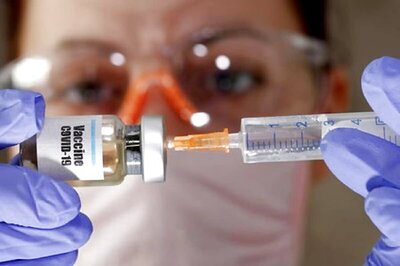
views
The video of a man getting electrocuted by a live wire in a freak accident in Kharagpur has made headlines. The victim survived with burn injuries. However, the horrifying video, caught through CCTV has shocked watchers.
A look at how electric shocks happen, how they affect the human body and how to treat them in an emergency:
How Does a Human Body Get Electrocuted?
An electric shock is the sensation of an electric current passing through the body. Living tissue is a natural conductor of electricity because it contains water. In fact, at rest, the human body generates approximately 100 watts of power and uses electricity to send signals to internal organs such as the heart, a report by Just Energy explains.
When an external source of electricity, such as a faulty power line or a lightning strike, comes into contact with a part of the body, an electric shock occurs. A shock can cause severe burns at the entry and exit points, as well as internal damage.
The severity of the damage is determined by the type of current, the type of tissue through which it passes, and the duration of contact with the current.
What Happens When Electricity Strikes the Human Body?
When electricity enters the human body, it attempts to pass through; the person’s feet and into the ground. If multiple parts of the body are in contact with the source of electricity, it may instead pass through another limb.
The path of current flow through the body has a significant impact on the severity of the electric shock injury. If an electrical current flows through the chest, it can cause arrhythmias (abnormal heart rhythms) and even cardiac arrest.
What Causes the Death of the Person?
The disruption of the heartbeat is the leading cause of death caused by electric shock. Some currents completely stop the heart, while others cause it to beat in an irregular rhythm. Even if the heart does not stop beating, the individual may still die as a result of other injuries, such as severe electrical burns or damage to other internal organs.
Some Things You Can Do to Avoid Getting Electrocuted:
- Never use an extension cord that has been damaged.
- Never use a faulty electrical device.
- To unplug an electrical device, pull on the plug rather than the cable.
- Before replacing a lightbulb, turn off the light or unplug the lamp.
- Before drilling a hole in the wall, locate the electrical wires.
- Get the right power bars if you have multiple outlets.
- Before filling the iron with water, always unplug it.
- Never use electrical devices in the bathroom if you are wet or the humidity level is high.
- Use of electrical devices or extension cords near a pool is prohibited.
- If one of your distribution panel’s breakers frequently trips, distribute your devices across multiple circuits.
- The third prong of a plug should not be cut or bent, it is an important feature.
- Never pour water on a burning outlet.
- When removing the cover plate of a switch or outlet, use caution.
What To Do If Someone Near You Has Gotten an Electric Shock?
If a person near you has gotten electrocuted, these are some things you should do, according to a report by Mayo Clinic.
Some Things a Person Should Be Cautious Of:
- Don’t touch an injured person who is still in contact with an electrical current.
- Call 108 or a local emergency service provider if the source of the burn is a high-voltage wire or lightning. Don’t get near high-voltage wires until the power is turned off. Overhead power lines usually aren’t insulated. Stay at least 20 feet (about 6 meters) away — farther if wires are jumping and sparking.
- Don’t move a person with an electrical injury unless there is immediate danger.
When to seek emergency care:
Call 108 or local emergency number if the injured person experiences:
- Severe burns
- Confusion
- Difficulty breathing
- Heart rhythm problems
- Cardiac arrest
- Muscle pain and contractions
- Seizures
- Loss of consciousness
Take these actions immediately while waiting for medical help:
- Turn off the source of electricity, if possible. If not, use a dry, nonconducting object made of cardboard, plastic or wood to move the source away from you and the injured person.
- Begin CPR if the person shows no signs of circulation, such as breathing, coughing or movement.
- Try to prevent the injured person from becoming chilled.
- Apply a bandage. Cover any burned areas with a sterile gauze bandage, if available, or a clean cloth. Don’t use a blanket or towel, because loose fibers can stick to the burns.
What Amount of Current Causes Injuries, Death
A mild electric shock is one that causes no significant symptoms or tissue damage. In general, currents less than 50 volts are unlikely to cause significant damage or death, but even low-voltage electrical circuits can cause injury in some circumstances, the report by Just Energy states.
According to the Merck Manual, low-frequency alternating current is potentially more dangerous than direct current because it “causes extended muscle contraction… which may freeze the hand to the current’s source and prolong exposure.”
High-voltage currents are those that exceed 500 volts and are more likely to cause electrical burns, internal injuries, and cardiac arrest.
Read all the Latest Explainers here




















Comments
0 comment